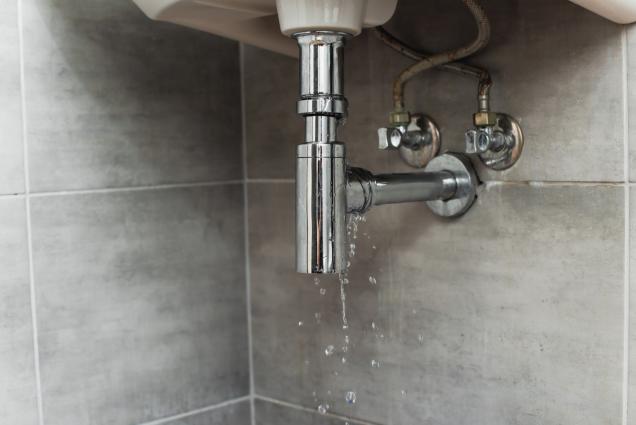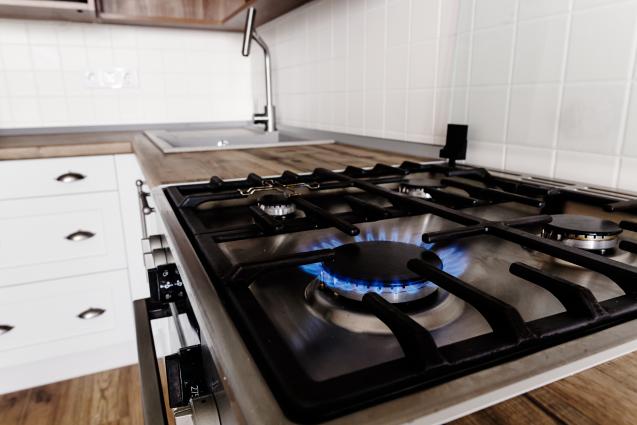
Top Preventative Maintenance Strategies for Electrical Systems
By Fluid Plumbing|June 27, 2024
Preventative maintenance for electrical systems is pivotal in ensuring their reliability and longevity. When overlooked, minor issues can escalate into significant failures, leading to costly downtimes and safety hazards. This article delves into the necessity of preventative maintenance, detailing strategies to keep electrical systems in top shape. By understanding and implementing these measures, one can effectively reduce the risk of unexpected failures and extend the lifespan of electrical equipment, making it a cost-effective investment.
Understanding Electrical Systems
Electrical systems are the backbone of modern infrastructure, powering homes, businesses, and industries. They comprise various components, each serving a specific function. The power source, conductors, load, and protective devices are key parts. The power source generates electrical energy, conductors transmit the energy, loads consume the energy, and protective devices safeguard the system from faults.
Potential problems within an electrical system can arise from several factors, such as wear and tear, environmental conditions, and improper installation. Common issues include insulation breakdown, loose connections, and corrosion. When these problems aren't addressed, they can lead to dangerous situations, such as electrical fires or system outages. Find out how internal electrical issues cause outages and the havoc they can wreak on everyday operations.
Why Preventative Maintenance is Essential for Electrical Systems
Preventative maintenance significantly impacts the lifespan and performance of electrical systems. Routine inspections and maintenance tasks can help identify and mitigate potential issues before they escalate. Regular checks maintain safety standards, ensuring that all components function correctly and reducing the risk of accidents.
Economically, preventative maintenance is beneficial. By addressing minor issues early, one can avoid the high costs associated with major repairs or replacements. Furthermore, maintaining efficient electrical systems contributes to energy savings and reduced operational costs.
On the flip side, neglecting preventative maintenance can have severe consequences. Electrical systems that aren't regularly maintained are prone to failures, leading to unplanned downtimes. Such downtimes can disrupt operations, result in financial losses, and compromise safety.
Top Preventative Measures for Electrical Systems
Regular System Inspection: Regular inspections are vital in identifying potential issues. Thorough examinations of all system components, including wiring, connections, and protective devices, can reveal signs of wear and tear, corrosion, or damage. Addressing these signs promptly can prevent larger problems.
Adjusting and Cleaning Components: Dust and grime can accumulate on electrical components, causing overheating and reduced efficiency. Regular cleaning and adjusting connections ensure optimal performance. Components should be kept free of dust, and connections should be tightened to prevent arcing, which can lead to fires.
Investment in Quality Equipment: Using high-quality components and equipment is a long-term investment. Although the initial cost may be higher, such equipment is often more durable and reliable, reducing the frequency of maintenance and replacements.
Training Personnel: Having well-trained personnel is crucial. They should be capable of handling minor issues and recognising potential threats. Training programs should focus on the safe operation of electrical systems, familiarising them with common problems and preventative measures.
Implementing a Preventative Maintenance Plan
Initiating a Preventative Maintenance Schedule: Establishing a maintenance schedule is the first step. It should include regular inspections, cleaning, and adjustments. The frequency can depend on the system's complexity, usage, and environmental conditions.
Key Elements in an Effective Maintenance Plan: An effective plan should include a detailed checklist of tasks, schedules for regular inspections, records of all maintenance activities, and a protocol for addressing identified issues. It should be comprehensive, covering all components and potential problem areas.
Essential Toolkit: A preventative maintenance toolkit should include diagnostic instruments, cleaning supplies, protective gear, and replacement parts. Having the right tools on hand ensures that maintenance tasks can be performed efficiently and safely.
Tips for Enforcing and Monitoring the Plan: Clear roles and responsibilities should be assigned to ensure the maintenance plan's effectiveness. Regular audits and reviews of the maintenance activities can help identify any gaps or areas for improvement. Keeping detailed records also helps track the system's health over time.
The Impact of Technology on Preventative Maintenance
Modern technology plays a crucial role in enhancing preventative maintenance strategies. Advanced diagnostic tools and software can significantly reduce human error and increase efficiency. For instance, infrared thermography can detect overheating in components, and ultrasonic testing can identify corona discharge in high-voltage equipment.
Technological solutions provide real-time monitoring and data collection, allowing for a more proactive approach. Maintenance management software helps track inspections, schedule tasks, and maintain comprehensive records. Such tools facilitate better decision-making and resource allocation.
Implementing technology-focused preventative maintenance involves integrating these tools with traditional methods. Combining human expertise and technological advancements ensures a robust maintenance program, optimising the electrical system's performance and extending its lifespan.
Conclusion
Preventative maintenance for electrical systems is indispensable for ensuring their reliability, safety, and longevity. By understanding the workings of electrical systems and recognising potential issues, one can implement effective preventative measures. Regular inspections, proper cleaning, investment in quality equipment, and trained personnel are all critical components of a successful maintenance strategy.
The introduction of modern technology further enhances these strategies, providing tools that improve efficiency and accuracy. Implementing a well-structured maintenance plan is an investment that pays off through reduced downtime, lower repair costs, and extended system lifespan. In sum, prioritising preventative maintenance for electrical systems proves to be a prudent and cost-effective approach, safeguarding both operational efficiency and safety.
Understanding Electrical Systems
Electrical systems are the backbone of modern infrastructure, powering homes, businesses, and industries. They comprise various components, each serving a specific function. The power source, conductors, load, and protective devices are key parts. The power source generates electrical energy, conductors transmit the energy, loads consume the energy, and protective devices safeguard the system from faults.
Potential problems within an electrical system can arise from several factors, such as wear and tear, environmental conditions, and improper installation. Common issues include insulation breakdown, loose connections, and corrosion. When these problems aren't addressed, they can lead to dangerous situations, such as electrical fires or system outages. Find out how internal electrical issues cause outages and the havoc they can wreak on everyday operations.
Why Preventative Maintenance is Essential for Electrical Systems
Preventative maintenance significantly impacts the lifespan and performance of electrical systems. Routine inspections and maintenance tasks can help identify and mitigate potential issues before they escalate. Regular checks maintain safety standards, ensuring that all components function correctly and reducing the risk of accidents.
Economically, preventative maintenance is beneficial. By addressing minor issues early, one can avoid the high costs associated with major repairs or replacements. Furthermore, maintaining efficient electrical systems contributes to energy savings and reduced operational costs.
On the flip side, neglecting preventative maintenance can have severe consequences. Electrical systems that aren't regularly maintained are prone to failures, leading to unplanned downtimes. Such downtimes can disrupt operations, result in financial losses, and compromise safety.
Top Preventative Measures for Electrical Systems
Regular System Inspection: Regular inspections are vital in identifying potential issues. Thorough examinations of all system components, including wiring, connections, and protective devices, can reveal signs of wear and tear, corrosion, or damage. Addressing these signs promptly can prevent larger problems.
Adjusting and Cleaning Components: Dust and grime can accumulate on electrical components, causing overheating and reduced efficiency. Regular cleaning and adjusting connections ensure optimal performance. Components should be kept free of dust, and connections should be tightened to prevent arcing, which can lead to fires.
Investment in Quality Equipment: Using high-quality components and equipment is a long-term investment. Although the initial cost may be higher, such equipment is often more durable and reliable, reducing the frequency of maintenance and replacements.
Training Personnel: Having well-trained personnel is crucial. They should be capable of handling minor issues and recognising potential threats. Training programs should focus on the safe operation of electrical systems, familiarising them with common problems and preventative measures.
Implementing a Preventative Maintenance Plan
Initiating a Preventative Maintenance Schedule: Establishing a maintenance schedule is the first step. It should include regular inspections, cleaning, and adjustments. The frequency can depend on the system's complexity, usage, and environmental conditions.
Key Elements in an Effective Maintenance Plan: An effective plan should include a detailed checklist of tasks, schedules for regular inspections, records of all maintenance activities, and a protocol for addressing identified issues. It should be comprehensive, covering all components and potential problem areas.
Essential Toolkit: A preventative maintenance toolkit should include diagnostic instruments, cleaning supplies, protective gear, and replacement parts. Having the right tools on hand ensures that maintenance tasks can be performed efficiently and safely.
Tips for Enforcing and Monitoring the Plan: Clear roles and responsibilities should be assigned to ensure the maintenance plan's effectiveness. Regular audits and reviews of the maintenance activities can help identify any gaps or areas for improvement. Keeping detailed records also helps track the system's health over time.
The Impact of Technology on Preventative Maintenance
Modern technology plays a crucial role in enhancing preventative maintenance strategies. Advanced diagnostic tools and software can significantly reduce human error and increase efficiency. For instance, infrared thermography can detect overheating in components, and ultrasonic testing can identify corona discharge in high-voltage equipment.
Technological solutions provide real-time monitoring and data collection, allowing for a more proactive approach. Maintenance management software helps track inspections, schedule tasks, and maintain comprehensive records. Such tools facilitate better decision-making and resource allocation.
Implementing technology-focused preventative maintenance involves integrating these tools with traditional methods. Combining human expertise and technological advancements ensures a robust maintenance program, optimising the electrical system's performance and extending its lifespan.
Conclusion
Preventative maintenance for electrical systems is indispensable for ensuring their reliability, safety, and longevity. By understanding the workings of electrical systems and recognising potential issues, one can implement effective preventative measures. Regular inspections, proper cleaning, investment in quality equipment, and trained personnel are all critical components of a successful maintenance strategy.
The introduction of modern technology further enhances these strategies, providing tools that improve efficiency and accuracy. Implementing a well-structured maintenance plan is an investment that pays off through reduced downtime, lower repair costs, and extended system lifespan. In sum, prioritising preventative maintenance for electrical systems proves to be a prudent and cost-effective approach, safeguarding both operational efficiency and safety.



